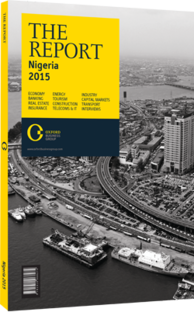Cement
The Company
Lafarge Africa is a 73%-owned subsidiary of France’s Lafarge SA and the result of a mid-2014 merger of Lafarge Wapco Cement (Wapco) with Lafarge South Africa Holdings, United Cement Company of Nigeria (Unicem), Ashaka Cement and Atlas Cement Company. The transaction, completed in September 2014, consolidated the parent company’s African assets, thereby raising the new entity’s market capitalisation to N521.9bn ($3.2bn) on the Nigerian Stock Exchange (NSE) and bringing its total cement manufacturing capacity to 12m tonnes per annum (tpa).
The largest of these, Wapco, has its production base in Nigeria’s south-western Ogun State and is the country’s second-largest manufacturer of cement, with about 12% of the industry’s capacity and 17% of its sales revenue. Wapco runs three plants with a combined capacity of 4.5m tpa and is the 100% owner of Lafarge ReadyMix Nigeria, which was established in 2011 in response to burgeoning opportunities in the Nigerian construction industry. Wapco currently offers three brands: Elephant Cement, the oldest and an all-purpose product; Supaset Cement, tailored to the block-making and precast segment; and Powermax Cement, a premium mix suited to both large construction projects and home needs. ReadyMix has nine plants in Nigeria, with plans for a total of 25 by the end of 2015.
Financial Peformance
The new company’s 2014 financial report, which consolidates its subsidiaries’ statements and recasts 2013 figures for comparison using the “pooling of interest” method, shows that overall revenue grew by 4% in nominal terms that year. Although revenues roughly equalled those in 2013 when adjusted for the fall in the South African rand, the portion coming from Wapco showed a strong increase, of 9% to N97.2bn ($592m), with ReadyMix’s turnover growing threefold and continuing to rise. This top-line growth – impressive given the competition in Nigeria’s cement market – is driven by persistently strong market demand, improved utilisation at the Ewekoro 11 plant and better supply of gas to its factories. An upgrade of fleets, which aided market penetration, also boosted sales in H1 2014.
Before the merger, Wapco’s cost of sales fell by 4% y-o-y in Q2 2014 to N16.3bn ($99.4m) but increased by 6% y-o-y in H1 2014 to N31.9bn ($194.6m). Gas utilisation, at high levels vs 2013, was very supportive of Wapco’s margins as cost of sales stood at about 58% in Q2 and H1. This boosted gross profit, which rose 29% y-o-y in Q2 and 22% in H1. Operating expenses, however, were up 49% y-o-y in Q2 and 35% y-o-y in H1, possibly due to higher marketing and distribution spends. In 2014, despite profit-before-tax surges of 37% y-o-y and 29% y-o-y in Q2 and H1, Wapco’s profit after tax in those respective periods fell by 13% y-o-y and grew by only 7% y-o-y. Weak growth in post-tax earnings was due to the base effect of a N1.9bn ($11.6m) tax credit received in Q2 2013. The tax rate in Q2 2014 came in at 18.7%, compared with 5.5% in Q1 2014.
Development Strategy
The aim of Lafarge’s 2014 decision to consolidate its African business, announced on June 3 and approved by Wapco shareholders at their annual meeting in July, was to form a leading building materials group for sub-Saharan Africa. To that end, Lafarge transferred all shares in its businesses in Nigeria and South Africa to Wapco, including interests in Lafarge South Africa Holdings (100%), Unicem (35%), Ashaka (58.61%) and Atlas (100%). Wapco was then renamed Lafarge Africa but maintained its listing on the NSE. The transaction involved payment of a cash consideration of $200m and issuance of 1,402,575,984 shares to Lafarge SA, raising the latter’s stake from 60% of Wapco to 73% of the new entity. Lafarge Africa thus gained strong coverage in Nigeria and South Africa, including five cement plants as well as operations in aggregates, ready-mix and fly ash, thus raising its share of Nigeria’s cement output to 21.2% and making it the NSE’s sixth-largest firm by market capitalisation. Completion of ongoing capacity expansion by Ashaka (3m tpa) and Unicem (2.5m tpa) will see the company’s capacity rise to 17m tpa in the next three to four years.
You have reached the limit of premium articles you can view for free.
Choose from the options below to purchase print or digital editions of our Reports. You can also purchase a website subscription giving you unlimited access to all of our Reports online for 12 months.
If you have already purchased this Report or have a website subscription, please login to continue.

